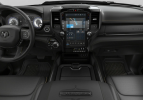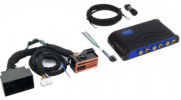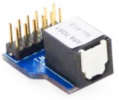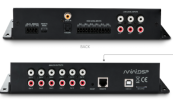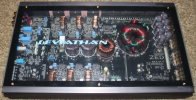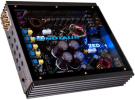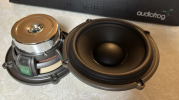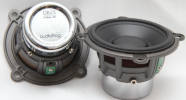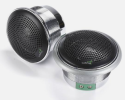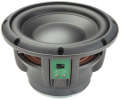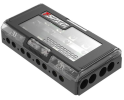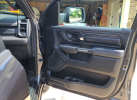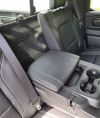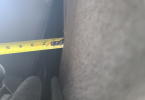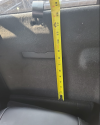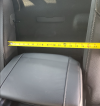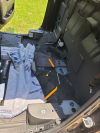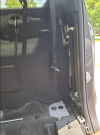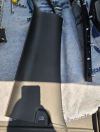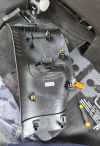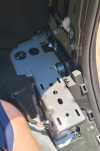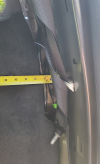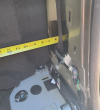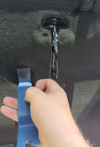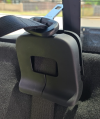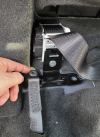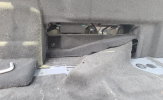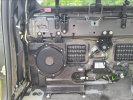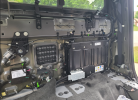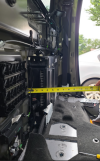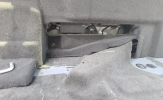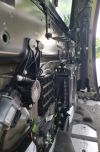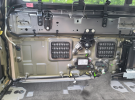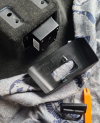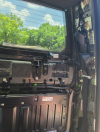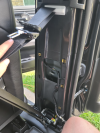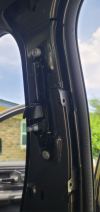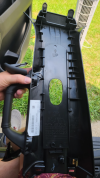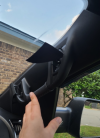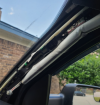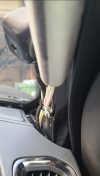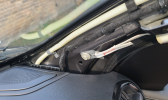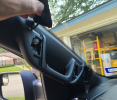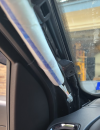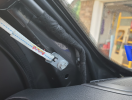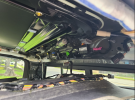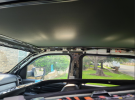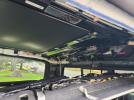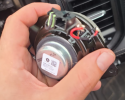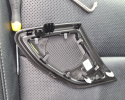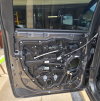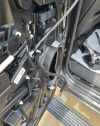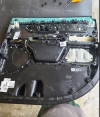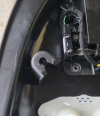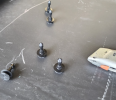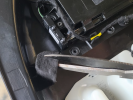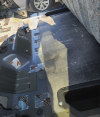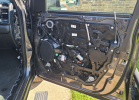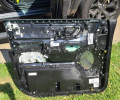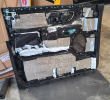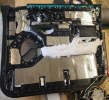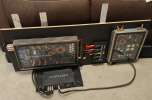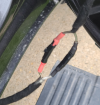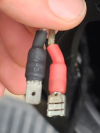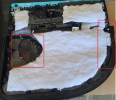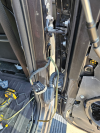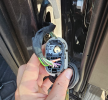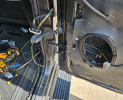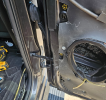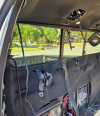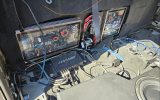Ceri
Active Member
- Joined
- Apr 25, 2023
- Messages
- 49
- Reaction score
- 23
Hey all. I'm wrapping up an audio install in my 2022 Limited Night Edition with the 19 speaker Harmon Kardon system, so I thought I'd share. My install involves mostly replacing the HK system, but uses factory locations for all of the speakers/drivers (other than the subs) for now. One of my main compromises was not permanently altering the interior of the vehicle in a visible way. I’ve done the “cut the metal” stuff in the past, but I tried really hard to not drill holes and cut things more than I have had to. That said, plastic panels can be replaced, and I’ve already checked on what it would cost to buy a backup set of A pillars and sail panels (not terrible), so never say never!
Here's my truck around the time I bought it. I'll randomly throw a few pictures in throughout this post to break up my walls of text. Some of the pictures I found on here were super helpful to me for planning my build.
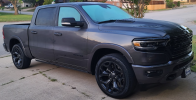
First some comments on the Harmon Kardon system. When I drove it home from the dealer, I wondered if I was going to invest the time (and money) in replacing it. It sounded pretty good at regular background listening levels. The midrange is decent to provide a good listening experience for the majority of truck buyers. The treble is lacking in intensity and detail, but the entire system is tweeterless, so it’s to be expected, and rolling off past 12 kHz is okay for normal listening. What really started grinding on me within my first week was the quality of the bass response in the system. I don’t expect huge output from any factory system, and I could totally live without quantity. It’s not meant to rattle the vehicle apart, and shouldn’t be. But the quality of the bass and midbass regions is pretty much crap, and it took me listening to some of my favorite 90s rock for a while to realize how bad it was. If you’re turning it up past 18 or so on the factory volume, you’re probably experiencing 5-10% distortion from the factory 6x9s and subwoofer in the bass/midbass region. If you’re pumping up the EQ for the bass, it’s probably worse than that. Loud sells trucks, and they get loud enough so test drivers can walk away with the “wow factor”, but the fidelity is missing, and you don’t know how badly until you’ve replaced it. The truck is literally made for audio. Ram put a lot of thought into road noise and the overall acoustic environment. As I was tearing apart my Limited for a full acoustic treatment it painted a picture of how much effort went into making it a quiet ride, and a rich audio environment. All of the luxurious interior treatments that go into making it look so sharp are beneficial to the acoustics of the vehicle as well. Hard, thin plastics make for bad listening. Leather wraps and padding make for excellent stage and image by reducing reflections. All that to say that if the HK system sounds bad in this truck, it’s Harmon Kardon’s fault. Not the truck. For the price point to upgrade to HK, the speakers aren’t constructed well. There’s always going to be compromises due to budget and manufacturing scalability. Ram’s going to make their money on the bells and whistles and I don’t fault them for that. If you spend $2000 on an upgrade package, it’s likely only costing them $400-600 to install it. The HK system is the best factory system I’ve ever bought, but it still wasn’t good enough to live with for the long haul. I’ve been a Toolhead for decades. When Tool didn’t sound good on the HK system, I knew I’d have to take the dive as I’ve done on the my last 4 vehicles over the past 20 years.
I knew when I was buying the truck that I’d need to have the 12” Uconnect for my starting point. Replacing factory source units has become almost insurmountably difficult as they keep integrating more and more features into the touchscreen displays. Overall, I give the 12” Uconnect5 an A-. Mainly the points off are for glitchy software behavior in an OEM unit, which should mean you’re at least guaranteed it functions as designed. Obviously things have gotten super complicated in factory source units, but it still counts for points off. Loving the wireless Android Auto functionality, and very happy that they aren’t fighting against the industry to put out their “own version” to the exclusion of the smarter people in that realm. Let the Samsungs/Apples/Googles take care of that sort of stuff, and Ram can focus on designing nice trucks. Kudos for that. With the availability of a PAC module to handle OEM integration, and especially because they allow digital to optical TOSLINK output without ever entering the analog domain, the source question is an easy answer. The input to the system is noiseless, with plenty of options at your fingertips through your phone, USB, etc. I might spend stupid amounts of time and money on car audio, but I still spend a fair share of my drive time listening to talk radio. HD Radio used to only be available for aftermarket head units as an expensive upgrade module. I spent ~$200 for an HD tuner module on one of my old decks. These days it’s a built-in assumption. It’s scary not having a CD player, but I get it. I went through that when I built my last PC and some of the best cases on the market no longer have front accessible 5.25” expansion bays for any sort of hard format inputs. Anyway. I targeted an option package that would get me a 12" UConnect, and held out for a 2022 to get UConnect 5. No regrets on the decision, and hopefully it keeps getting better with driveway updates.
Looks like there's a 10 picture limit per post, so more to come below the fold.
Here's my truck around the time I bought it. I'll randomly throw a few pictures in throughout this post to break up my walls of text. Some of the pictures I found on here were super helpful to me for planning my build.

First some comments on the Harmon Kardon system. When I drove it home from the dealer, I wondered if I was going to invest the time (and money) in replacing it. It sounded pretty good at regular background listening levels. The midrange is decent to provide a good listening experience for the majority of truck buyers. The treble is lacking in intensity and detail, but the entire system is tweeterless, so it’s to be expected, and rolling off past 12 kHz is okay for normal listening. What really started grinding on me within my first week was the quality of the bass response in the system. I don’t expect huge output from any factory system, and I could totally live without quantity. It’s not meant to rattle the vehicle apart, and shouldn’t be. But the quality of the bass and midbass regions is pretty much crap, and it took me listening to some of my favorite 90s rock for a while to realize how bad it was. If you’re turning it up past 18 or so on the factory volume, you’re probably experiencing 5-10% distortion from the factory 6x9s and subwoofer in the bass/midbass region. If you’re pumping up the EQ for the bass, it’s probably worse than that. Loud sells trucks, and they get loud enough so test drivers can walk away with the “wow factor”, but the fidelity is missing, and you don’t know how badly until you’ve replaced it. The truck is literally made for audio. Ram put a lot of thought into road noise and the overall acoustic environment. As I was tearing apart my Limited for a full acoustic treatment it painted a picture of how much effort went into making it a quiet ride, and a rich audio environment. All of the luxurious interior treatments that go into making it look so sharp are beneficial to the acoustics of the vehicle as well. Hard, thin plastics make for bad listening. Leather wraps and padding make for excellent stage and image by reducing reflections. All that to say that if the HK system sounds bad in this truck, it’s Harmon Kardon’s fault. Not the truck. For the price point to upgrade to HK, the speakers aren’t constructed well. There’s always going to be compromises due to budget and manufacturing scalability. Ram’s going to make their money on the bells and whistles and I don’t fault them for that. If you spend $2000 on an upgrade package, it’s likely only costing them $400-600 to install it. The HK system is the best factory system I’ve ever bought, but it still wasn’t good enough to live with for the long haul. I’ve been a Toolhead for decades. When Tool didn’t sound good on the HK system, I knew I’d have to take the dive as I’ve done on the my last 4 vehicles over the past 20 years.
I knew when I was buying the truck that I’d need to have the 12” Uconnect for my starting point. Replacing factory source units has become almost insurmountably difficult as they keep integrating more and more features into the touchscreen displays. Overall, I give the 12” Uconnect5 an A-. Mainly the points off are for glitchy software behavior in an OEM unit, which should mean you’re at least guaranteed it functions as designed. Obviously things have gotten super complicated in factory source units, but it still counts for points off. Loving the wireless Android Auto functionality, and very happy that they aren’t fighting against the industry to put out their “own version” to the exclusion of the smarter people in that realm. Let the Samsungs/Apples/Googles take care of that sort of stuff, and Ram can focus on designing nice trucks. Kudos for that. With the availability of a PAC module to handle OEM integration, and especially because they allow digital to optical TOSLINK output without ever entering the analog domain, the source question is an easy answer. The input to the system is noiseless, with plenty of options at your fingertips through your phone, USB, etc. I might spend stupid amounts of time and money on car audio, but I still spend a fair share of my drive time listening to talk radio. HD Radio used to only be available for aftermarket head units as an expensive upgrade module. I spent ~$200 for an HD tuner module on one of my old decks. These days it’s a built-in assumption. It’s scary not having a CD player, but I get it. I went through that when I built my last PC and some of the best cases on the market no longer have front accessible 5.25” expansion bays for any sort of hard format inputs. Anyway. I targeted an option package that would get me a 12" UConnect, and held out for a 2022 to get UConnect 5. No regrets on the decision, and hopefully it keeps getting better with driveway updates.
Looks like there's a 10 picture limit per post, so more to come below the fold.
Last edited:

